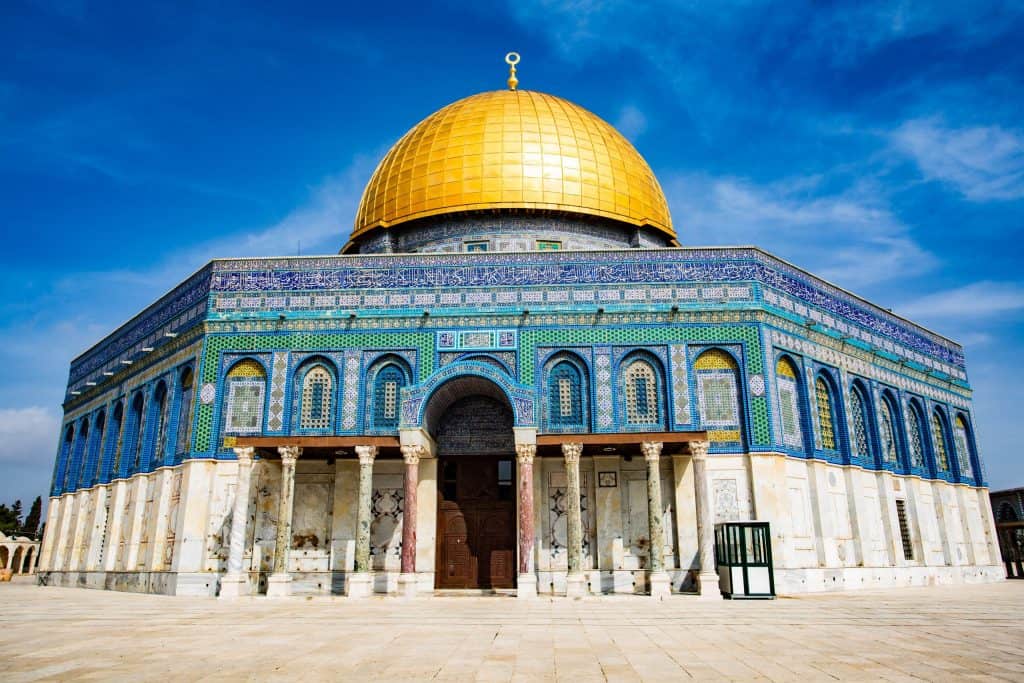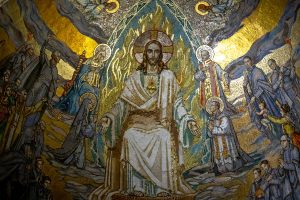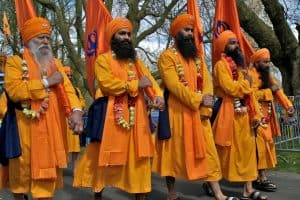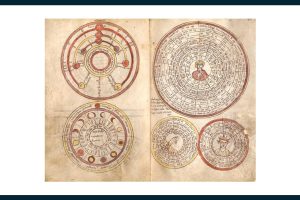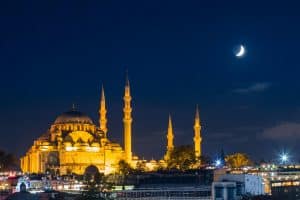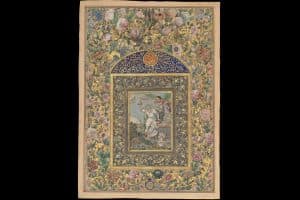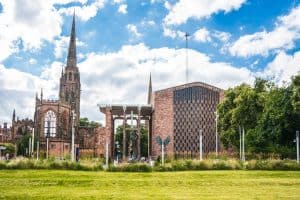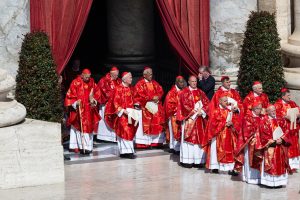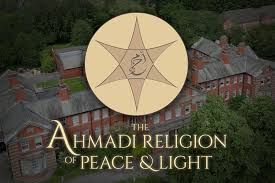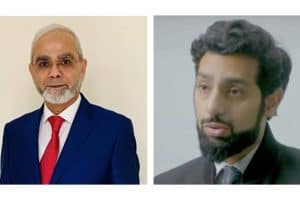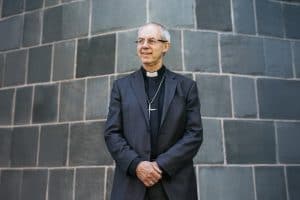By Dr Sarah Harvey
Islam is one of the world’s largest faiths, with an estimated 1.6 billion adherents worldwide. It began in seventh-century Arabia as an offshoot from two other Abrahamic faiths, Judaism and Christianity. Its followers today represent 23 per cent of the world’s population
There are an estimated 1.6 billion Muslims worldwide, about 23 per cent of the world population in 2020. According to the Pew Forum (2009), 60 per cent of the world’s Muslims are in Asia and 20 per cent in the Middle East and North Africa.
There are 2.7 million Muslims in the UK, just over five per cent of the population, according to the 2011 Census. It is the second-largest religion in the UK, after Christianity.
How did Islam begin?
Islam began as a small community of believers in seventh-century Arabia. It was founded by Muhammad who is believed to be the last of God’s prophets. Islam was not seen as a new religion by its followers but as a perfection and completion of God’s message.
Muhammad was born in Mecca, Arabia, in 570. Tradition states that at the age of 40, on a regular spiritual retreat into the mountains by his home, Muhammad was visited by the Archangel Gabriel, and instructed to read God’s message.
Muhammad then began teaching a message of monotheism, in secret, for fear of persecution. But Muhammad and his followers were persecuted and so in 622 they left Mecca for Yathrib (now known as Medina). This emigration is known as the Hijra and is used as the start-date of the Islamic calendar.
In Medina, Muhammad formed the first Muslim community and drafted a charter to bring about peace between rival tribes and ensure the rights of Jews, Muslims, Pagans and other minorities in the city. Muhammad died at the age of 63. His grave now forms part of the mosque known as Al-Masjid al-Nabawi (The Prophet’s Mosque).
After Muhammad’s death, the Muslim community was sequentially led by four of his close companions, who were elected as the caliphs (leaders). These caliphs were not accepted by all of the Muslim community, resulting in various disputes over leadership, the biggest one leading to the split between Sunni and Shia Islam.
What do Muslims believe?
The Islamic declaration of faith states that “there is no God but God, and Muhammad is the messenger of God” — thus Muhammad is central to Islamic belief.
When Muslims mention Muhammad’s name, they say, in Arabic, “Salallahu alayhi wa-salam” (Peace and blessings of God be upon him), or “Alayhi as-salām” (Peace be upon him) as a mark of respect. In written English, “Peace be upon him” is often abbreviated to PBUH.
Muslims believe that the final message of God (Allah) was communicated to the Prophet Muhammad and is preserved in the Quran (also spelt as Koran), which is their main scripture. The Quran is believed to be the direct word of God. As well as spiritual teachings, it advises on legal matters (eg in relation to marriage, divorce and business), as well as more general guidance on ethics and etiquette.
Other central texts are the Sunnah, the account of the life of Muhammad, including sayings and practices, which is used by Muslims as a guide for living, the Hadith — the collected sayings of Muhammad — and the Seerah, religious biographies of Muhammad. Rules derived from the Quran and Hadith are often referred to collectively as “Sharia”.
Islamic belief is often summed up in the Six Articles of Faith:
- Belief in one God
- Belief in angels and the unseen (such as heaven and hell)
- Belief in holy books
- Belief in the prophets and messengers of God
- Belief in the Day of Judgment and the afterlife
- Belief in predestination (that everything in life follows God’s plan)
How do Muslims practise their faith?
Core Islamic practice is often summed up in the “Five Pillars”:
- Shahadah — the proclamation of faith that “There is no God but God and Muhammad is the messenger of God”. Muslims view this statement as underpinning their faith and hope for it to be their final words before they die.
- Salat — ritual worship in the form of five daily prayers, performed at intervals throughout the day, after ritual washing has been completed.
- Sawm — fasting for a period of up to 30 days, every year in the month of Ramadan. Ramadan is the central point of the Muslim calendar, where individuals abstain from food and drink between dawn and dusk. There is emphasis on breaking away from worldly activities and instead, taking time for reflection. Eid al-Fitr, the celebration at the end of Ramadan, is a festive time spent with family and friends, with extra prayers offered in mosques.
- Zakat — an obligatory amount of charity, calculated at 2.5 per cent of one’s total wealth, which Muslims are expected to give to the more needy every year. Believers are also encouraged to give voluntary charity (known as Sadaqah) regularly.
- Hajj — the pilgrimage to the Holy City of Mecca, in Saudi Arabia, at least once in a lifetime (if they are able to do so). Eid al-Adha is the second of the two main Muslim festivals and marks the end of the pilgrimage. Muslims may also perform a lesser pilgrimage to Mecca known as Umrah, which can be done at any time of the year.
Muslims worship communally at mosques, often visiting more than one for a variety of factors but largely convenience.
Mosques are sites of key rituals. The daily prayers, from early morning to late evening; marriage ceremonies; funeral prayers; and occasional festivals (such as celebrations and prayers associated with the two main religious feasts, Eid al-Fitr, celebrating the end of the Ramadan fast, and Eid al-Adha, commemorating the end of the pilgrimage). Larger mosques will hold a range of activities including youth groups, open days, and interfaith activities.
Mosque communities are usually formed of three constituent parts. The imams, or the religious leadership; the committee and managers who are responsible for the running of the mosque, and finally, the congregation. Mosque employees are few. In most mosques, it may be one or two imams, working part time. Larger mosques may have teachers, administrative staff, and outreach officers.
What are the main denominations within Islam?
The main sub-division is between Sunni and Shia Islam, which occurred within the first 50 years. Although the split was political in nature, theological differences have also developed.
Sunni Muslims make up between 85 and 90 per cent of the Muslim population worldwide — hence Sunni Islam is sometimes described as “orthodox”. Shia Muslims make up between 10 and 15 per cent and are concentrated in Iran, Iraq, India and Pakistan. In the UK, Sunnis account for about 75 per cent of all Muslims; Shias about eight per cent.
The division occurred because of a dispute over leadership after Muhammad’s death. Sunnis believe in four successive leaders, called Rashidun (rightly guided caliphs), after Muhammad: Abu Bakr (his father-in-law), Umar, Uthman and Ali (his cousin and son-in-law).
Shias believe that before Muhammad died, he had nominated Ali as his rightful successor and therefore he should have been the first caliph. Sunni and Shia Muslims follow different systems of jurisprudence or “legal schools”, which differ on their interpretations of Islamic law.
Sunni Islam
Sunni Islam is broadly divided into four main schools:
- Hanafi — the predominant school in South Asia and in the UK. Both Deobandis and Barelvis / Ahle Sunnat wal Jama’at, the two largest groups in the UK, follow this school
- Hanbali — predominant among Gulf Arabs
- Maliki — predominant among West and North African Muslims
- Shafi — predominant among East Africans and Southeast Asians
However, not all Sunnis follow a legal school. Salafis — the fastest-growing branch of Sunni Islam in the UK — is not associated with one school.
Shia Islam
Shias believe in the concept of divine lineage — that Muhammad was succeeded by members of his family (known as the Ahl al-Bayt), including Ali and Fatima, the Prophet’s daughter, who was also the wife of Ali, and their children Hasan and Husayn.
This succession was then passed down in a clergy system known as the imamate. The imams are believed to be infallible. The last of the 12 infallible imams is believed to be the “Hidden Imam” or the Mahdi — a messianic figure who is believed to arrive towards the end times, to establish justice on earth.
One of the most important Islamic months for Shia Muslims is Muharram, when the Prophet’s grandson, Husayn, was murdered in Karbala (in modern-day Iraq). The story of Husayn’s martyrdom forms a crucial part of the Shia identity, and is retold during mourning ceremonies.
Shia Muslims traditionally follow a living scholar (marja), rooted in a religious school, such as Grand Ayatollah Sistani, who is based in Najaf, Iraq, but has millions of followers across the Shia world.
Shia Islam can be further divided into the Ithna Ashariya (also known as “Twelvers”) and Ismaili branches. Twelvers are the majority group and they believe in twelve infallible imams. Ismailis believe in seven infallible imams. The largest group within the Ismaili movement is the Nizari branch, which believes that there is an “Imam of the Time”.
This imam is regarded as a descendant of the Prophet Muhammad and accorded the right to make decisions on the Ismaili faith, as he sees necessary. The living imam has the title of Aga Khan, the 49th and current Imam is Shah Karim al-Husayni. Nizari Ismailis have a small but strong presence in Britain stemming from the 19th century, with London being home to some important Ismaili institutions. These include the Aga Khan University, the Institute of Ismaili Studies, and the Ismaili Centre.
Sufism
Sufism is a broad term that is used to describe various movements of Islamic mysticism and is not a distinct sect. Sufis may belong to either the Sunni or Shia tradition. Sufis believe in the importance of constant awareness of God’s presence. They stress the divine-human relationship, love for the Prophet Muhammad, as well as discipline of the mind and body.
They differ from other Muslims in celebrating the Prophet Muhammad’s birthday, and the revering of saints. Traditionally Sufis were formally part of orders called Tariqas, led by an esteemed teacher who can trace his spiritual lineage to the Prophet, his family or companions. These include the Chishti, Naqshbandi and Qadiri orders, branches of which exist in the UK.
The Ahmadiyya Muslim Community
There are an estimated 1.6 million Ahmadis worldwide, including 25,000 in the UK. The community was founded in 1889 by Mirza Ghulam Ahmad (1835-1908), who was born in Qadian, India.
Ahmad described himself as a prophet sent by God, as well as the awaited messiah and promised mahdi. For this reason, they are considered heretical and not recognised as Muslims by some other Muslim traditions. They face severe persecution in Pakistan, with some calling for the death of Ahmadis who do not convert to Sunni Islam.
The biggest Ahmadiyya Muslim Community mosque in the UK, the Baitul Futuh, is in south London. Ahmadis can face persecution in the UK too: in March 2016, Asad Shah, a Glaswegian Ahmadi shopkeeper, was murdered by an anti-Ahmadi Muslim man.
What about Islam in the UK?
In the 2011 census, there were 2,706,000 Muslims — 4.8 per cent of the population. Three-quarters of the Muslim population live in four regions: London, the West Midlands, the northwest, Yorkshire and the Humber. About half of all UK Muslims in 2020 were British-born, and just over a third are of Pakistani heritage.
The first mosque in Britain was established in 1889 in Woking and now there are 1,700, from terraced houses to purpose-built larger mosques with congregations of several thousand. Read more in our factsheet: Islam in Britain
What are the contemporary issues in Islam?
Popular perception and media presentation often wrongly imply that Muslims are not well integrated into British life. Islam is sometimes portrayed as an inherently violent religion, with its followers susceptible to radicalisation. Needless to say, the huge majority of Muslims denounce all acts of violence and terrorism.
Political groups such as al-Qaeda, and later the “Islamic State” (also known as Isis, Isil or Daesh), have inspired terrorist activity in the UK such as the London 7/7 bombings; the murder of soldier Lee Rigby in 2013; attacks in central London in 2017 and 2019; and the Manchester Arena bombing in 2017.
A significant proportion of British Muslims view anti-terrorism policies (such as the Prevent policy) as unfairly targeting Muslim communities, including in school and university settings. These policies, alongside popular perception and media coverage have created a context of racism and social exclusion for its followers.
The organisation “Tell Mama” reports a year-by-year increase in cases of Islamophobia — women who wear the hijab are particularly targeted. For some Muslims, the defence of a strong religious identity and authority has become a source of resistance towards growing levels of Islamophobia and other forms of anti-Muslim prejudice.
Recurring controversies about Muslims in Britain relate to everyday “lifestyle” issues and practices in which boundaries between religion and culture are blurred, such as: gender issues, especially in relation to women’s dress, forced marriage and the practice of female genital mutilation (FGM). There is often confusion and conflation over the different forms of dress: the hijab is a headscarf; niqab is a face-veil and the burka is a full-body veil with a face mesh.
Other significant issues include sexuality, particularly attitudes towards lesbian, gay, bisexual and transgender people, diet, especially in regard to halal, or religiously permissible, dietary requirements, including the slaughter of animals and so-called “Sharia courts”. These are often portrayed in the media as separate courts of law, but which are used by Muslims as intermediaries in, for example, matters of marital dispute. In truth, they have no power to enforce rulings and provide mediation services to those Muslims who choose to use them.
Dr Sarah Harvey is senior research officer at Inform, an independent, educational charity based at King’s College London, which provides information about minority religious, spiritual and political movements.
Academic experts
Dr Carool Kersten, King’s College London
Professor Sophie Gilliat-Ray, director for the Centre for the Study of Islam in the UK (Islam-UK), Cardiff University
Dr Michael Munnik and Dr Mo Azim Ahmed, academics at the Cardiff centre
Professor Sean McLoughlin, professor of the anthropology of Islam, Leeds University.
Dr Shanon Shah Mohd Sidik, King’s College London
The Oxford Centre for Islamic Studies
The British Association for Islamic Studies
Further reading
Ali, Abdullah Yusuf (2004) The Meaning of the Holy Quran (Arabic/English). Amana Publications
Ansari, Humayun (2012) The Infidel Within: Muslims in Britain since 1800. Hurst and Co
Armstrong, Karen (2002) Islam: A Short History. Modern Library
Bruinessen, Martin van and Stefano Allievi (2011) Producing Islamic Knowledge: Transmission and Dissemination in Western Europe. Routledge Islamic Studies Series. Oxon: Routledge
Elahi, Farah and Omar Khan (eds) (2017) Islamophobia: Still a Challenge for Us All. London: Runnymede
El-Menouar, Yasemin (2017) “Muslims in Europe: Integrated but Not Accepted?” Gutersloh: Bertelsmann Stiftung
Esposito, John L. (ed) (2009) The Oxford Encyclopaedia of the Islamic World. Oxford University Press
Gilliat-Ray, Sophie (2010) Muslims in Britain: An Introduction. Cambridge University Press
Inge, Anabel (2017) The Making of a Salafi Muslim Woman: Paths to Conversion. New York: Oxford University Press
Kersten, Carool (2019) Contemporary Thought in the Muslim World: Trends, Themes and Issues. London: Routledge
Lewis, Philip (2007) Young, British and Muslim. London: Continuum International Publishing Group
Lewis, Philip and Sadek Hamid (2018) British Muslims: New Directions in Islamic Thought, Creativity and Activism. Edinburgh: Edinburgh University Press
Lings, Martin (2006) Muhammad: His life based on the Earliest Sources. Inner Traditions
Malik, Maleiha (ed.) (2012) Anti-Muslim Prejudice: Past and Present. London: Routledge
Metcalf, Barbara (2014) Islamic Revival in British India: Deoband, 1860-1900. Princeton: Princeton University Press
Pew Research (2009) “Religion & Public Life Project Mapping the Global Muslim Population”. Available here.
Ruthven, Malise (1997) Islam: A Very Short Introduction. Oxford: Oxford University Press

